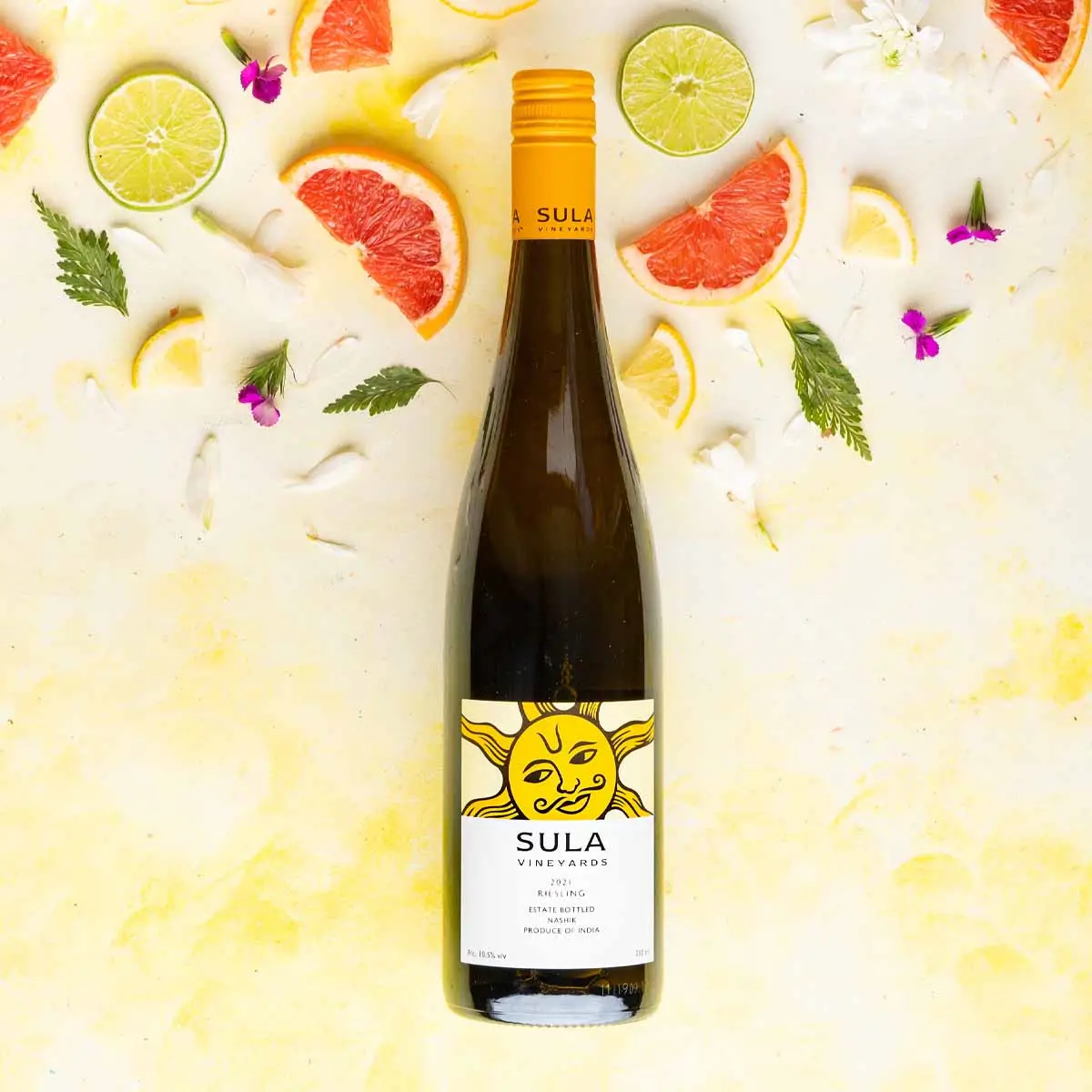Drinking wine can be all the more enjoyable, once you realise the power of knowing exactly what each element on the bottle’s label means. Think about it, isn’t your grocery shopping experience more efficient when you know exactly why you’re buying what you’re buying? Even when it comes to eating a meal that’s been on your mind, it’s because you have been craving its specific flavours. The same process is applicable when it comes to enjoying your experience with drinking wine to the fullest. You can have the best red wine, white wine or rosé wine in front of you - but if you don’t know exactly what you are getting into, the task of picking the appropriate bottle might seem daunting. The reality is that reading wine labels isn’t rocket science. Before we get into breaking down the process, let’s understand why wine labels are so important.
Why do labels matter so much to a wine drinker?
Sula’s red, white, rosé and sparkling wines have different qualities from one another. Within these categories, there is further segregation. For instance, in red wine, we have Sula Shiraz Cabernet, The Source Cabernet Sauvignon and Rasa Cabernet Sauvignon; and all three stand out for various reasons. We know it may seem confusing, but once you understand how to decipher what everything means, you will find yourself picking up the perfect bottle for every occasion without feeling bewildered. The labels will help you understand the wine’s type, flavour and quality. It goes without saying that these aspects would help you understand your palate’s wine preferences even better.
Variety of Grapes Used
The variety of grapes used is the biggest indicator of the tasting notes and the depth of the wine. Sula wines consist of several such varieties. Keep an eye out for names such as ‘Zinfandel’, ‘Cabernet Sauvignon’, ‘Shiraz’, ‘Chenin Blanc’, ‘Grenache’ and so on, typically above the region on the label. Each of these varieties has its own contribution to the combination of flavours of the wine. For instance, the Zinfandel variety is known to have fruity flavours, followed by spice and a smoky finish. The beauty of winemaking is such that you can also come across blends. Sula Shiraz Cabernet is one such example. As you may have guessed, this wine is a blend of the smokier, peppery Shiraz variety of grape and sweeter, fruity Cabernet Sauvignon variety of grape. This particular blend has done so well, that this red wine has become a bestseller in India. By virtue of these flavours, each wine has different recommended food pairings. Although it might seem like work, it is worth it to know the flavours that each variety offers, so that you can narrow your selections down appropriately.
The Producer and the Brand
The producer is probably the most obvious element on the label. This is an indication of who made the wine, and that is why you might have observed ‘Sula Vineyards’ prominently mentioned on our bottles. However, there can be an exception. Some wine labels only have the brand name mentioned on them. In our case, you can find our brand names like ‘Rasa’ and ‘The Source’ mentioned on our bottles. And of course, when it comes to Sula Classics, there is no additional name present. Each brand has its unique qualities. For instance, the Rasa concept for wines involves artisan winemaking, The Source wines are aged in French Oak barrels and Dindori Reserve wines are aged for a year in new oak.
The Region
The region is mentioned on wine labels, to indicate where the grapes that went into making the wine were sourced from. If the region mentioned is larger, that wine is considered to be a value wine. Almost all of our wine bottles have “Nashik, produce of India” mentioned at the bottom of the label. An exception would be our Dia Wine Sparklers in cans, where there is no mention of this detail, which goes to show that it is a value purchase.
Vintage or Non-Vintage
The year mentioned on wine labels is known as the ‘vintage’. This simply signifies the year in which the grapes used to make the wine were harvested. Basically, the vintage can tell you something about the quality of the wine, especially if it’s the type that can age well. It can also give you an idea about if the grapes were grown in a year of perfect weather, or if the conditions were meteorologically challenged. You can find the vintage on almost all of Sula’s labels. Non-vintage wines are usually ready for drinking on release. Non-vintage wines can also pull wine from multiple vintages to control the flavour. There is a common misconception that if a wine is non-vintage, it automatically isn’t as good as a vintage option. However, a wine being non-vintage has nothing to do with a lowered quality.
Alcohol by Volume
The alcohol by volume or ABV level is another big factor when it comes to your wine-drinking experience. It can be an indication of how rich the wine might taste. You can find the level mentioned at the bottom left corner of most of our labels at the front, and also at the back. Sula Zinfandel has an ABV level of 13.5%, whereas The Source Grenache Rosé has an ABV level of 12.5% and Dia Wine in a can, 8%. Thus, our variations in levels of alcohol can be helpful when it comes to picking the right choice, depending on what your week or schedule looks like.
Estated Bottle
This particular element is only present on certain wine labels. Estate bottled means that the wine was grown, produced and bottled on the wine estate. For example, the mention of ‘estate bottled’ on Rasa Syrah means that the entire process took place on the estate vineyards of Sula. Since in many instances, the winery doesn’t necessarily have to own the vineyards, but controls the vineyards and performs the operations, ‘estate bottled’ suggests accountability to the vineyard for everything involved in the making of the finished bottle.
Reserve
Reserve is another example of an element that is present only on some wine labels. The idea behind it is that winemakers would hold back or ‘reserve’ some of their wine from a particularly good tasting vintage. Thus, it basically means that a reserve wine is a quality wine that has usually been aged longer. Good examples would include our Dindori Reserve Shiraz, Dindori Reserve Chardonnay and Dindori Reserve Viognier.
Tasting Notes
Keep an eye out for the label at the back of our bottles as well. They can consist of flavour descriptions of the wine, and also certain serving instructions, such as if it should be chilled or not. Keeping these points in mind can play a big role in your wine picking process.
Final Thoughts
At Sula, every wine is made keeping the environment in
mind, by following strict sustainable,
environment-friendly practices. We’re always striving to
bring you the best-quality wines in India, combining
various winemaking techniques. We hope that this
detailed breakdown of reading wine labels helps with
enjoying your wine drinking experience even more.
Want to stay updated with the latest in the world of
wines? Follow us on Instagram , Facebook , and
Linkedin
today!







